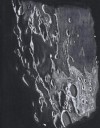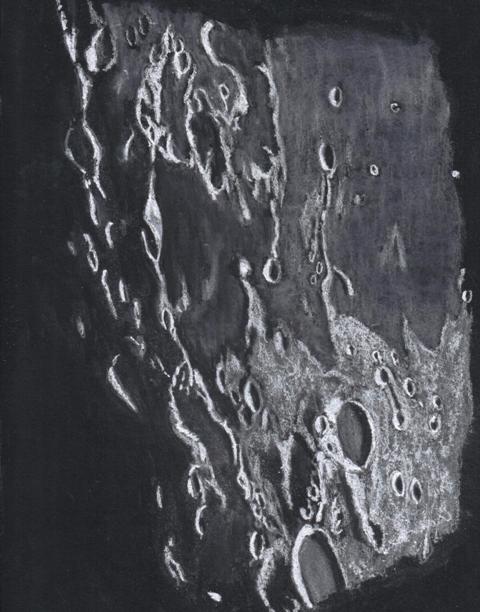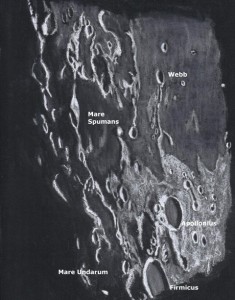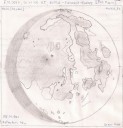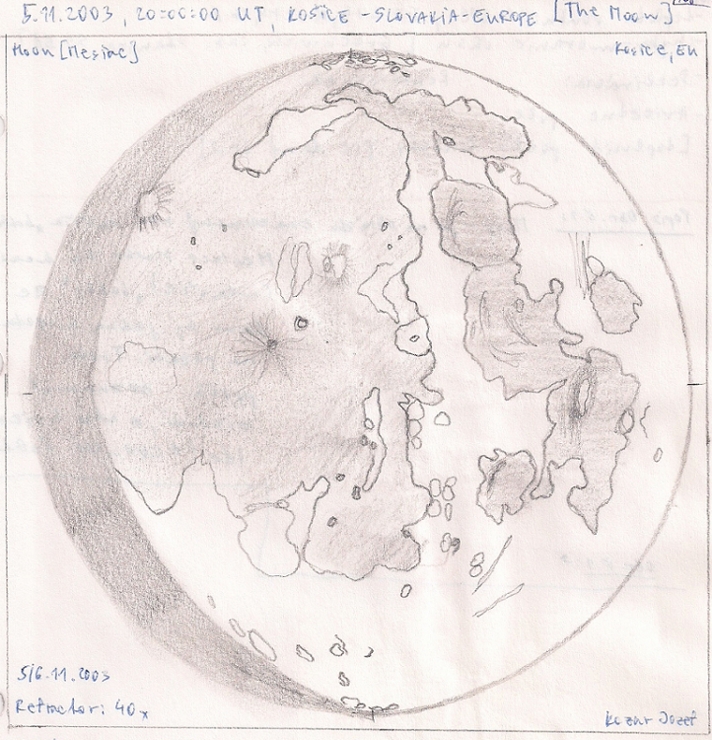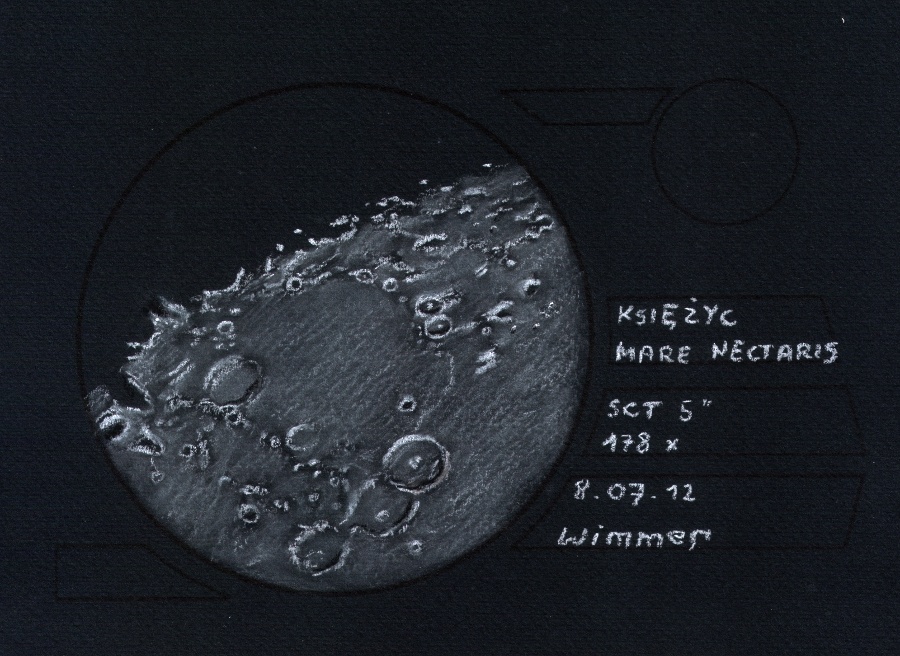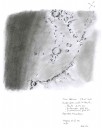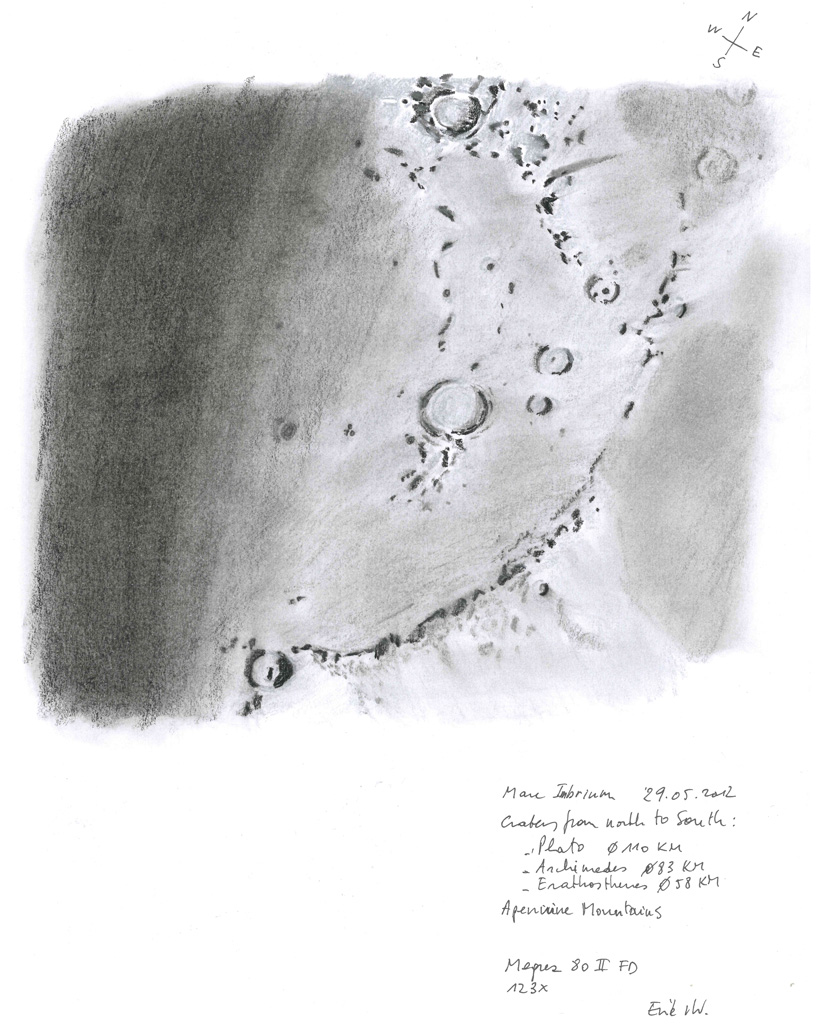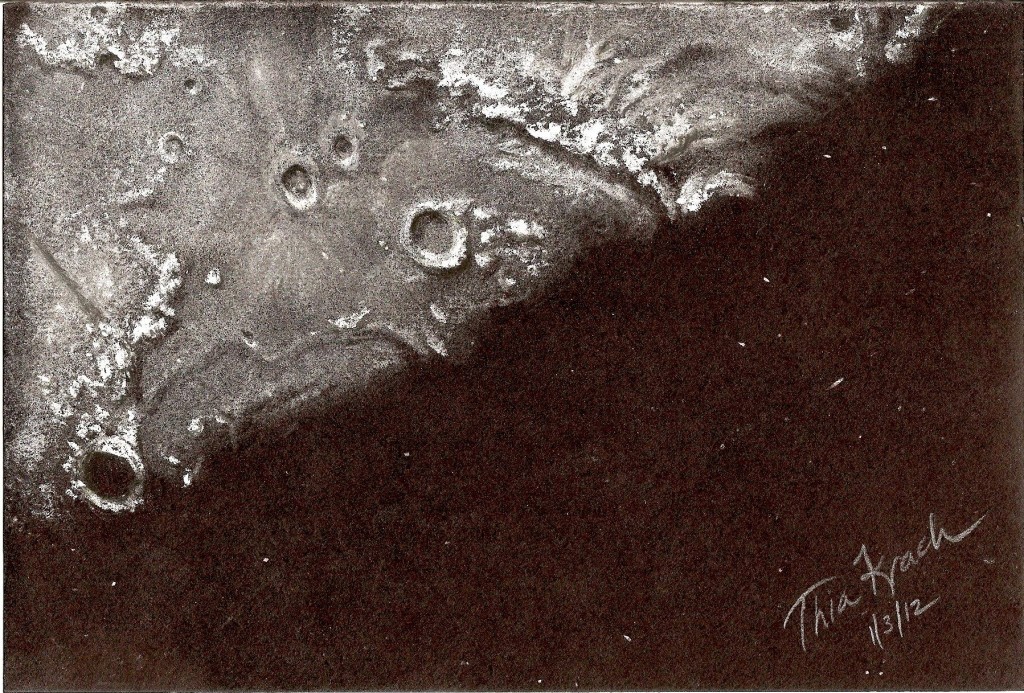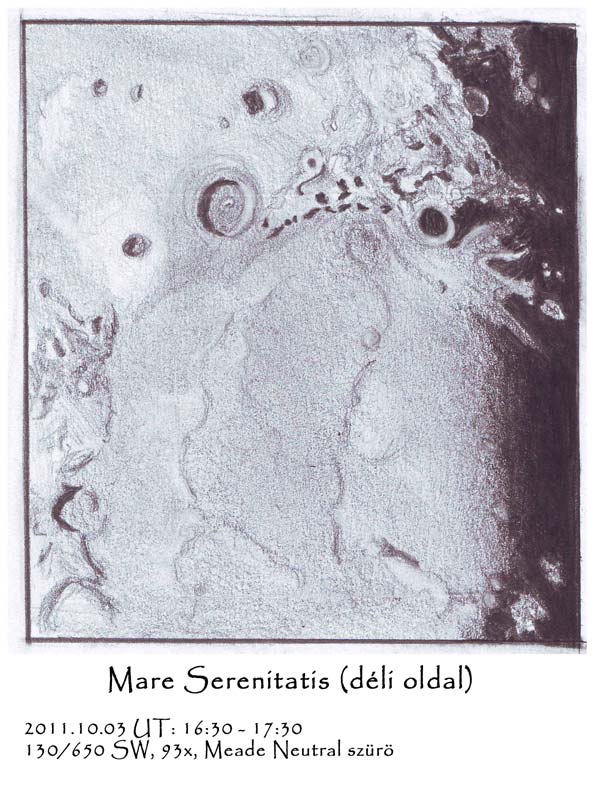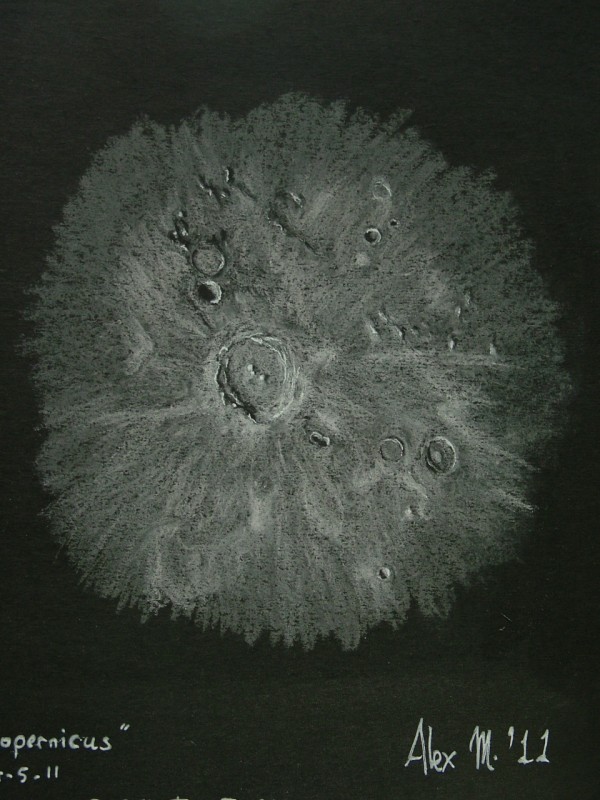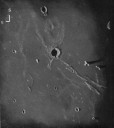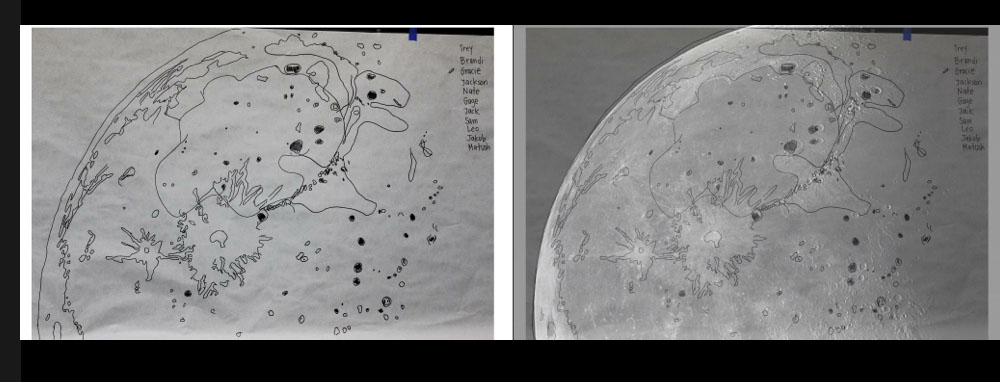
The L.C. Bates Museum in Hinckley, Maine received a NASA SOI (Summer of Inquiry) Grant this summer, and astronomy camp was held this past week. Twelve campers, age eight to twelve, observed the sun’s photosphere (whitelight) and chromosphere (h-alpha), put together a Gallileoscope, flew a 5′ tall Montgolfier-inspired hot-air balloon, constructed Alexander-Graham-Bell-type tetrahedron-cell kites (flying machines), learned how to measure a celestial object’s altitude and azimuth, and made the attached drawing after a daytime observation of our moon. The sketch was made from a projected image of our daylight observation.
Submmitted by John Stetson
